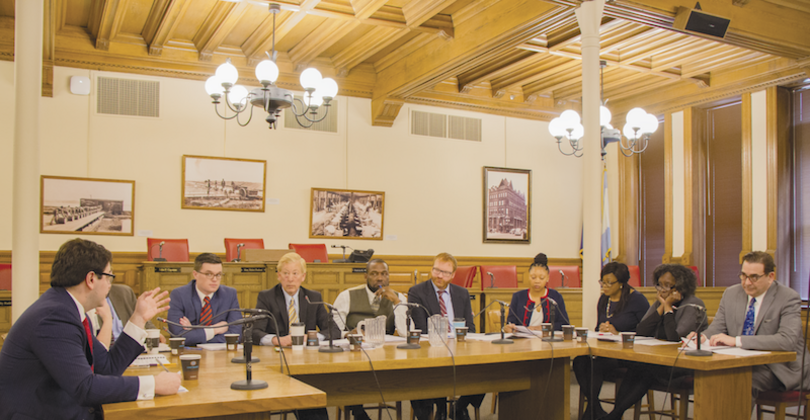3 takeaways from Syracuse Mayor Ben Walsh’s first budget proposal

The proposed city budget spending is $245 million, plus more than $400 million for the Syracuse City School District. Kai Nguyen | Photo Editor
Mayor Ben Walsh recently proposed a new plan that aims to slowly close the city’s multimillion-dollar budget deficit.
Here are three takeaways from the proposal and subsequent budget hearings, organized by the city’s Common Council.
Deficit and schools
Syracuse will have a $245 million spending budget next year, not including funding for the Syracuse City School District. The school district proposed a $437 million budget for 2018-19.
The city will face an $11 million budget deficit next year, compared to an initially expected $16.5 million deficit.
Walsh in an interview with The Daily Orange last week said the budget is unsustainable, even though it’s lower than expected. Syracuse will use money from its reserves to close the gap in funding.
SCSD did not obtain all of the expected financial aid from New York state to close the gap in the district budget. District officials asked for $12 million to help close a $24 million budget deficit, but only received $4.6 million in state aid, according to Syracuse.com. SCSD will use money from district savings to close the gap instead, Syracuse.com reported.
“The significant challenges our city faces will not be addressed in a single year. We need a long-term strategy, so this budget is really the first in a multi-year plan,” Walsh said at the initial budget proposal meeting.
Spending cuts
Walsh, in the budget proposal, said the city could cut spending in areas such as social security, medical insurance, parks conservancy, the department of public works and city employee, police and fire retirement systems.
The DPW will see cuts across the board, including in areas such as street repair, street cleaning and snow and ice control. Parks, recreation and youth programming will also experience spending decreases.
The city’s employee retirement system will face a 14 percent cutback, and social security will have a 1.3 percent spending cut. Walsh has also proposed a freeze on hiring and salary increases.
In Fiscal Year 2018-19, spending will be flat across all city departments.
“We know we cannot continue to operate at a deficit, but we think that we’re putting the right pieces in places to work towards eliminating that deficit,” Walsh said in the interview.
Police
Police expenditures are expected to rise by more than $630,000 next year, with most of that money going toward field services. Field services include patrols, K9 units, crime reduction, the traffic division, the community policing division, recruitment functions, uniform bureau staff and the investigations team, Syracuse Police Chief Frank Fowler said at a police budget hearing last week.
The SPD currently has 403 police officers and the city is projected to lose five officers by May, Fowler said.
Walsh has hired 25 to 30 police officers to fill vacancies and cut down on overtime costs earlier this year. The city spent more than $8 million in overtime wages for sworn field officers in 2017 and anticipates spending $8.2 million on overtime in 2018, according to the budget proposal.
There are currently about 61 positions in the SPD that are unfilled but funded by the city, at present, Fowler said at the budget hearing.
Spending cuts are expected to help divert funding to hiring more police officers and firefighters.





